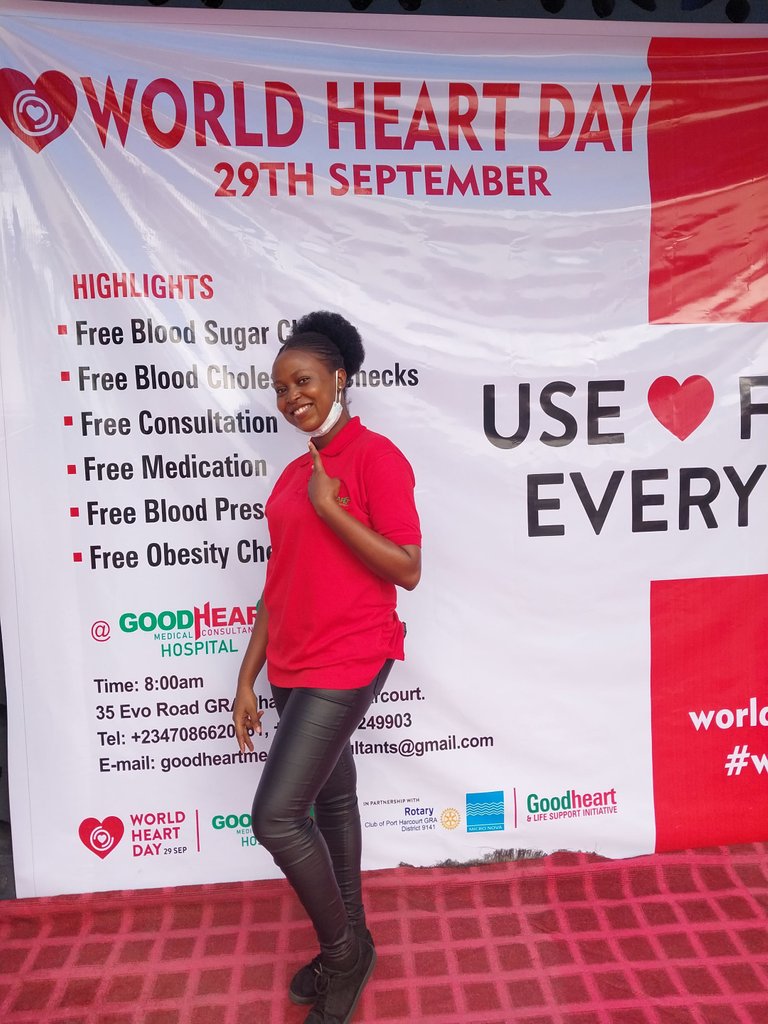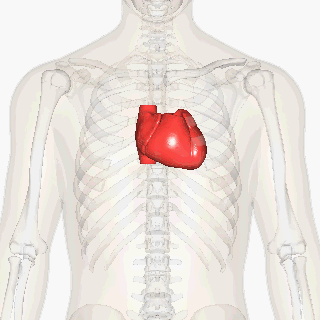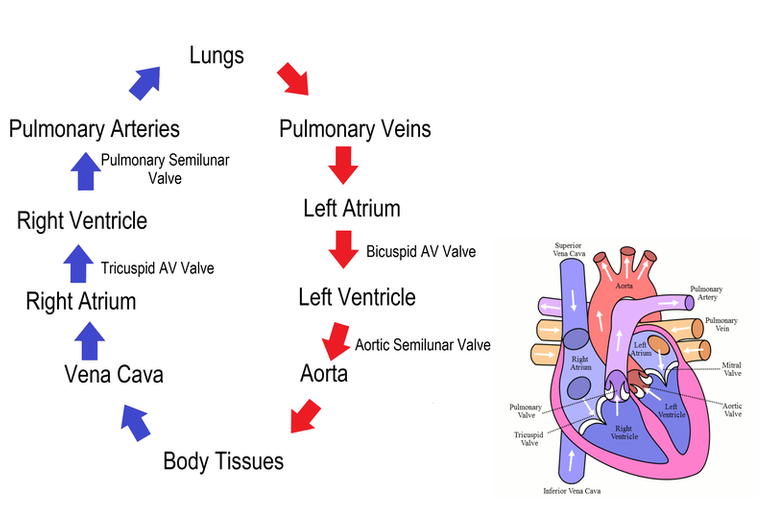Hello everyone I am really excited today and I know some persons may be wondering the reason behind my high Spirit today 😊 it's simple and I'm happy I have this great opportunity and platform to talk about it. So far as you are alive breathing it means you really need to join us all in the celebration of this great day to mark the importance of the heart which is our body's power house.
Some person's might be wondering why I'm making a big deal out of this celebration. Hmm to be sincere,my experience in the health sector as a nurse especially where I'm currently working which is a cardiology unit,have really exposed me and is still exposing me to so many things that concerns the human heart which are neglected.

[WORLD HEART DAY CELEBRATION AT MY WORK PLACE. PICTURE BY ME]
So that is why I want to seize this opportunity to enlighten us on the heart briefly as a way of sensitization in the spirit of the celebration. Please kindly flow with me as I discuss this wonderful topic and pardon me for dropping the post a bit later.
THE HEART
The heart is a muscular organ that has the shape of the fist of it's owner, it's a very important organ of the human body and because of the outcome of it's activities,the whole body is powdered to function.
Today's post will be brief more like a sensitization with regards to the WORLDHEARTDAY. So let's continue ,the heart is made up of 3layers or components which are the:
PERICARDIUM
Which is known as the outermost part of the heart that separates it from the surrounding organs and in addition, it safeguards the internal structures.
MYOCARDIUM
Which is the second middle layer of the heart. This part is made up of muscles which allows the heart to contract efficiently to let blood out of it into circulation.
This muscle layer of the heart is very important as any injury to it that makes it unable to contract properly will result to heart conditions which will be discussed in my subsequent post.
ENDOCARDIUM
The innermost layer of the heart where most structures are seen and it has key role in ensuring free flow of blood within the compartments of the heart.
In addition to the layers of the heart, I will also like to tell us that the heart has 4 compartments or chambers and they are:
• THE RIGHT ATRIUM: which is responsible for receiving blood less in oxygen(deoxygenated blood) from systemic circulation which is the blood from the body. And this atrium is the upper part.
• THE RIGHT VENTRICLE: this is the lower part and is separated from the right atrium by a valve. When this valve opens, it allows blood from the right atrium to flow into the right ventricle. And to add, the ventricles are usually very muscular that is why they have the pumping function(pumps blood out).
This blood which is poor in oxygen,is pumped out to the lungs which is known as pulmonary circulation and is done to increase the oxygen content of the blood (oxygenation).
• THE LEFT ATRIUM: the blood which has been made rich in oxygen from the pulmonary circulation is now delivered to the left atrium.
• THE LEFT VENTRICLE: this part receives oxygen rich blood (oxygenated blood) unlike the right side and because of its muscular nature, it pumps out this blood to the body(systemic circulation) through the various blood vessels for the body to function as well as the heart itself and these is possible through the different blood vessels which serves as channels for carrying these blood to the target areas.
I will pause here for the description of the heart and will continue in my next post.
Always know that
YOU NEED A HEALTHY HEART TO LOVE AND LIVE, SO ALWAYS ENSURE REGULAR HEART EXAMINATIONS TO KEEP YOUR HEART FIT
REGULAR BLOOD PRESSURE CHECKS
CHOLESTEROL CHECKS
BODY MASS INDEX CHECKS
ECG CHECKS
GOOD DIETING
REGULAR EXERCISE
ADEQUATE REST
This are the things you need to stay fit and safe from heart diseases.
See you in my next post where I will discuss more about the heart, blood vessels and these heart investigations as well as diseases
of the heart. Thanks for being part of the celebration.#HAPPYWORLDHEARTDAYCELEBRATION29THSEPTEMBER#
REFERENCES





